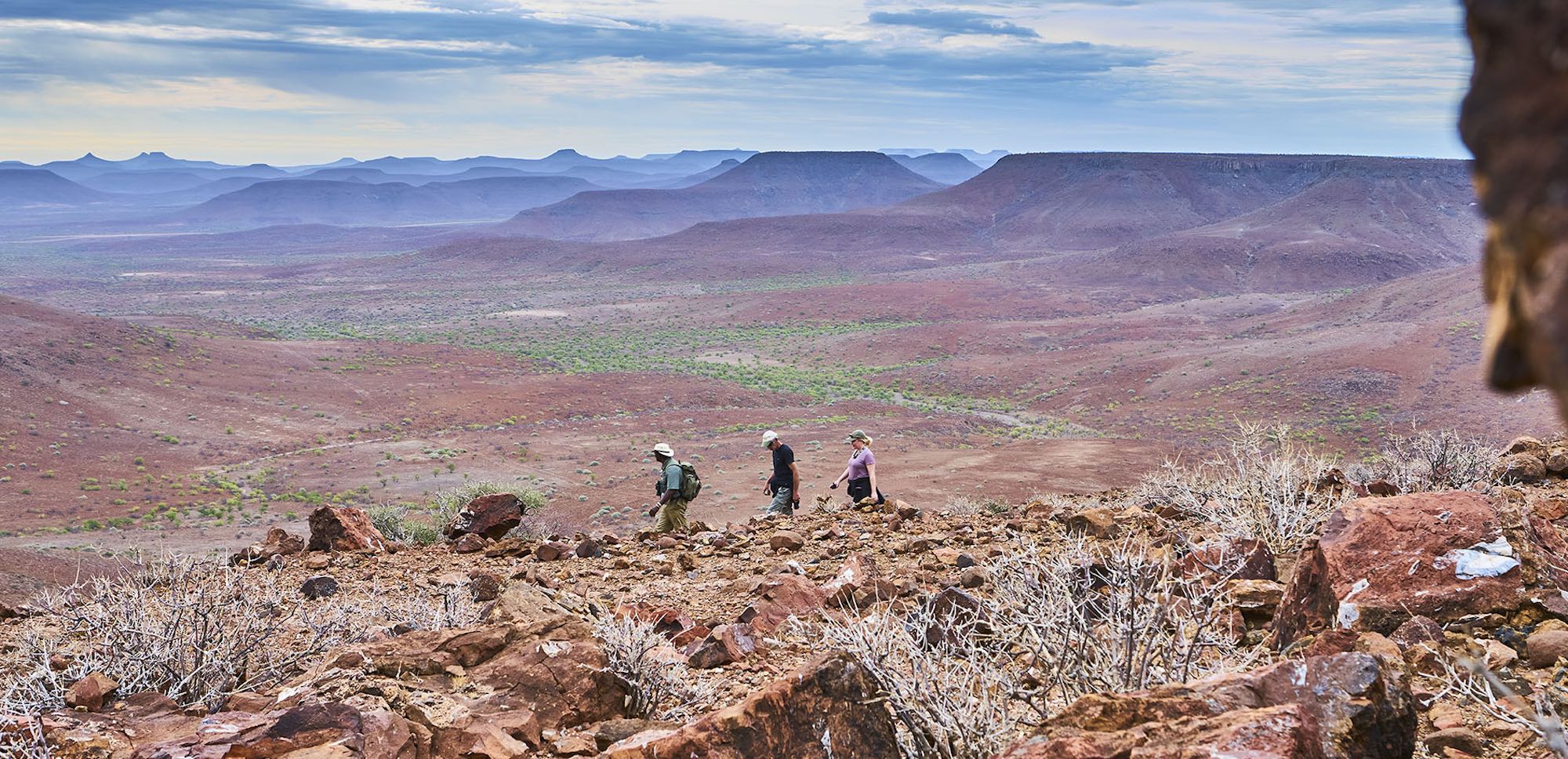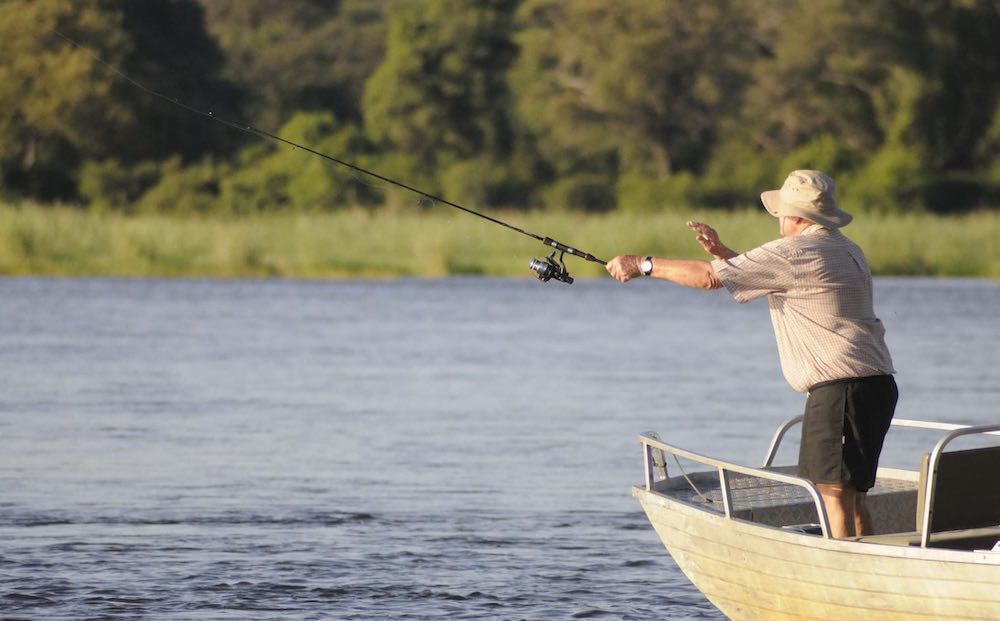
Conservationtourism.com.na
Inspiring responsible travel to Namibia's communal conservancies
By Siphiwe Lutibezi and Ginger Mauney
8th August 2020
Tourism, conservation and community development are inextricably linked and mutually supportive in Namibia's rural areas. They provide training, employment and motivation to continue to protect wildlife and wild places, and they generate a win-win situation for people, wildlife and Namibia's economy.
Community conservation areas, known as conservancies, establish solid foundations for natural resource management in combination with sustainable development and livelihood diversification. By proactively managing natural resources, conservancies have created an attractive investment environment for private tourism operations to enter joint ventures with these communities to introduce tourists to their wildlife and natural landscapes. Tourism has thus significantly added to the conservation success and long-term sustainability of Namibia's Community-based Natural Resource Management (CBNRM) programme.
The first conservancy joint venture lodge was established in 1996. Today there are 62 joint venture lodges in 33 conservancies. At the end of 2018 a total of 1,174 people were employed in conservancy joint venture lodges and the conservancy programme has generated an income of N$93,771,228 directly from joint venture lodges, of which N$29.9 million were invested in conservation and rural development.

The economic impact of joint venture tourism and the value it adds to keeping wildlife on the land cannot be underestimated, particularly in rural areas where there is little opportunity for economic growth. However, joint venture tourism cannot be successful without tourists, who need to know what type of experiences conservancy tourism offers and how choosing to stay at one of these lodges has a positive impact on conservation and sustainable development. To get this message across to potential visitors, the conservancy tourism sector must become more active in the global marketplace – the Internet.
Over half of the world's population were Internet users in 2018, and 73% of travellers used online sources when deciding on their destination. To reach these travellers, the Namibian Association of CBNRM Support Organisations (NACSO) updated the content, design and interactivity of an award-winning website – see conservationtourism.com.na.

Following the site's redesign it is now easily accessible via cell phones and tablets, which is an important change given that travellers are increasingly using mobile devices to search for their accommodation. Travel-related searches using mobile devices in 2018/19 accounted for 47% of all searches in Europe, 40% in Asia, 34% in Latin America, and 38% in the Middle East and Africa.
Another important travel statistic for Namibia is that 55% of travellers think that the best thing about travel is getting out of their comfort zone. The communal conservancy tourism website showcases the adventurous aspect of this kind of tourism, where visitors can take the road less travelled, support conservation while on the holiday of a lifetime and find space to contemplate our place on this spectacular, fragile planet. In particular, people visiting conservancies will be introduced to different cultures and gain fresh insight into the natural world, which will give them a deeper experience than the average safari.
The new website includes several new sections. Where to Go explores regional options in the northwest, west, central, south, east, north and northeast of Namibia. The What to Do section provides information on everything from fishing to hiking, photography to celebrations and much more. While the Where to go section encourages visitors to explore the hidden gems
in conservancies and to consider new themes for their trips, whether it be searching for elephants roaming freely in the conservancies or connecting with rural people by exploring various cultures and rich traditions expressed through arts and handmade crafts, stories about rock paintings, and traditional dances.

The site also presents the history of the conservancy movement, tips for responsible travel and a series of short videos called “voices in conservation” where conservancy members explain the importance of conservation in their lives and to their communities. These videos are featured alongside other destinations and conservation videos, while the new blog section is for continual updates and adding new stories over time.
While the conservancy tourism website is not a booking site, it adds value for the online visitor by describing the conservancies' relationships with their joint venture partners. The site is a “one-stop” information hub that provides information on all of the conservancy-based lodge offerings with links to their respective websites where visitors can book their holidays.
The conservation tourism website was launched at the Namibia Tourism Expo in May 2019 by the Minister of Environment and Tourism, Pohamba Shifeta, who applauded this fresh approach that's designed to inspire more people to visit Namibia.
To encourage traffic to the new website, a social media campaign is underway. Related Facebook and Instagram pages are updated twice a week with posts highlighting a specific area, activity or adventure to be found in Namibia's communal conservancies. These posts contain links to the website for more information, all with the goal of inspiring our online audience to visit Namibia's communal conservancies. The conservation tourism website and social media posts stress the importance of community conservation and tourism initiatives in rural communities. These not only contribute to the local and national economy, but also continue to enhance Namibia's global reputation as a leader in community-based conservation tourism.
Conservationtourism.com.na will encourage you to explore Namibia's communal conservancies and experience the best kind of tourism – sustainable, inspiring and authentic – that brings out the very best in all of us.
For articles on similar topics, please click one of the following options:











